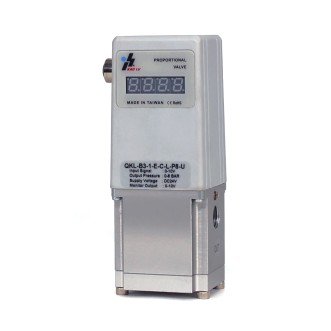Technology
Top 5 Benefits of Electronic Vacuum Controller
An electronic vacuum regulator enables the regulation of vacuum by a computer-controlled command signal. To manage the process pressure, the command signal is first supplied to a tiny electronic regulator, which generates a pilot signal for the reference port of the digital vacuum regulator. This pilot reference signal is provided by a series of precise electronic pressure regulators. The QPV ultra-resolution and EPR-30Hg variants feature almost little hysteresis or dead band, allowing for exact tuning. These regulators can be utilized in open or closed-loop configurations.
The vacuum setpoint is commanded in open loop mode through a computerized signal provided to the electronic pilot regulator. The pilot regulator applies the ordered pressure to the EVR reference port in order to maintain the process vacuum within a few percent of the setpoint value. When operating in open-loop mode, there will be a little variation in vacuum pressure as flow rates increase.
Controlling the Vacuum Automatically Using an Electronic Vacuum Regulator:
There are several applications in which process containers must be kept under a vacuum control regulator with changing setpoints. Vacuum drying, vacuum distillation, and vacuum extraction of essential oils and tastes are all examples. To increase accuracy, electronic vacuum regulators do not employ springs but rather rely on a 1:1 setpoint pilot pressure on their dome. Additionally, by installing a separate vacuum pressure regulator valve calibrated for the vacuum range, this dome-loaded feature enables simple computer automation (gauge or absolute).
Vacuum Control Automation Using a Remote PID Controller in Closed-Loop Mode:
In the right-hand schematic, an electro-pneumatic vacuum regulator (EPR) is linked to the electronic vacuum regulator to give the 1:1 setpoint pilot signal. The EPR requires a vacuum supply, which can be given via the ERV’s output or a separate vacuum supply. In this case, a distant PID controller monitors the crucial process vacuum and transmits a signal to the EPR, which adjusts the electronic vacuum regulator valve setpoint as appropriate.
Unlike conventional vacuum valves, which are difficult to tune and need considerable time to respond to changing flow conditions, the vacuum regulator automatically adjusts to changing flow rates internally. Although closed-loop modifications from the PID controller are not essential, they improve the overall system’s accuracy.
Temperature Control in Advanced Mode Using Two-Phase Refrigerant Pressure Control:
Conventional refrigeration systems circulate a combination of liquid and vapor refrigerant through the evaporator coils and are designed to return vapor to the compressor. While it is feasible to control the rate of heat transfer into the evaporator by adjusting the flow rate, the temperature of the evaporator coil cannot be controlled directly.
Temperature Control for a High-Speed Evaporator:
A revolutionary technology is offered for rapidly and precisely changing the temperature of the evaporator surfaces directly. It is feasible to maintain the coil temperature precisely at the refrigerant saturation temperature corresponding to the regulated fluid pressure by utilizing an electronically activated negative pressure regulator downstream of the evaporator. When regulating heat transfer occurs, two-phase refrigerant (saturated vapor + liquid) enters the electronic vacuum regulator and expands to vapor inside the valve.
When maximum cooling is required, the BPR is opened, lowering the evaporator pressure and enabling the coil to evaporate fully. As the pressure setting is decreased, the latent heat of the liquid rapidly vaporizing on the tube surfaces provides an immediate cooling boost. Both the dynamic evaporation boost and the steady-state heat transfer control assist the process control.

















